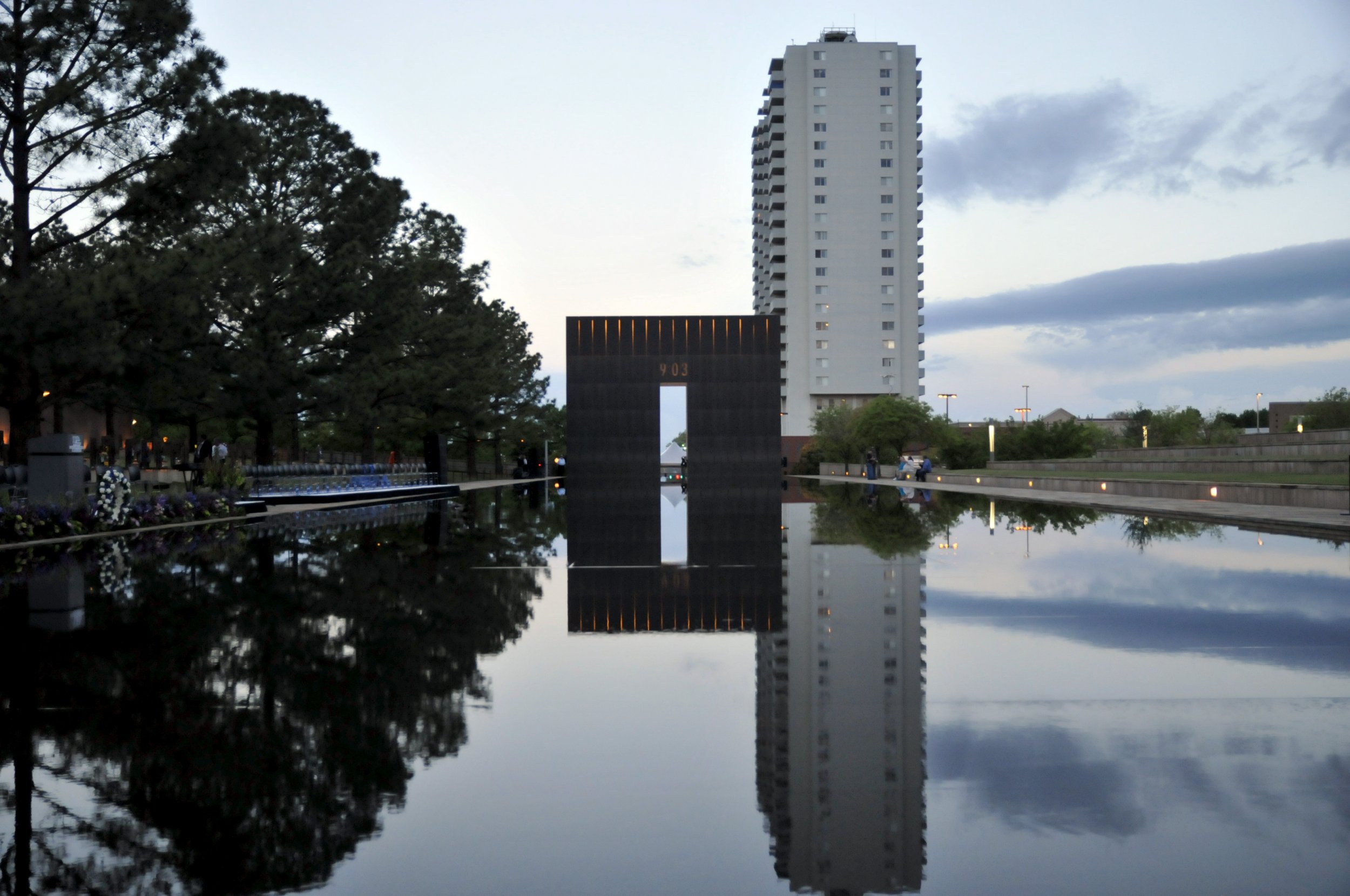
Updated | OKLAHOMA CITY (Reuters) - Hundreds of people gathered on Sunday at the site of the 1995 Oklahoma City bombing to remember the 168 men, women and children killed when a truck stuffed with tons of explosives blew up at a downtown federal building.
Former President Bill Clinton was among the dignitaries who addressed the crowd outside the Oklahoma City National Memorial and Museum.
"Oklahoma City, you had to choose to redeem your terrible losses by having to begin again," said Clinton, who was in his first term in office at the time of the attack, one of the deadliest of its kind ever staged on U.S. soil.
The museum, built over the spot where the destroyed Alfred P. Murrah Federal Building once stood, includes a permanent display of 168 empty chairs, one for each person who died.
On Sunday morning, the seats were adorned with flowers, teddy bears and other mementos. The name of each victim was read aloud by relatives, co-workers and survivors.
"It was 60 minutes of terror," said Oklahoma City Mayor Mick Cornett. "But our finest hour has lasted 20 years. This city has progressed in a manner that none of us could have foreseen."
The bombing was carried out on April 19, 1995, by Timothy McVeigh, an anti-government militant who was eventually convicted on federal charges and executed. His accomplice Terry Nichols received multiple life prison sentences for his part in the bombing, which also injured hundreds.
Among the many survivors at Sunday's ceremony was Priscilla Salyers. She said she has reflected on how far she has come in fighting the depression and survivor's guilt that has gripped her since she plummeted five floors when the fuel-and-fertilizer bomb detonated the nine-story building.
Salyers remembers locking eyes with a co-worker she would never see alive again as the floor disintegrated under her feet. She was trapped in the rubble for hours, her head beneath a 25-foot column of concrete.
Today, the depression does not haunt Salyers as often, she says. Helping to design the memorial was a step in her healing.
"I hope we are an inspiration to those who are starting their own journey to healing," Salyers said. "I hope people see that life goes on."
Also attending the ceremony were some of the so-called "miracle babies" who were at a daycare center in the building when the bomb exploded.
Despite seared lungs, ravaged faces and mental and psychological scars, they try not to dwell on the past.
Uncommon Knowledge
Newsweek is committed to challenging conventional wisdom and finding connections in the search for common ground.
Newsweek is committed to challenging conventional wisdom and finding connections in the search for common ground.





